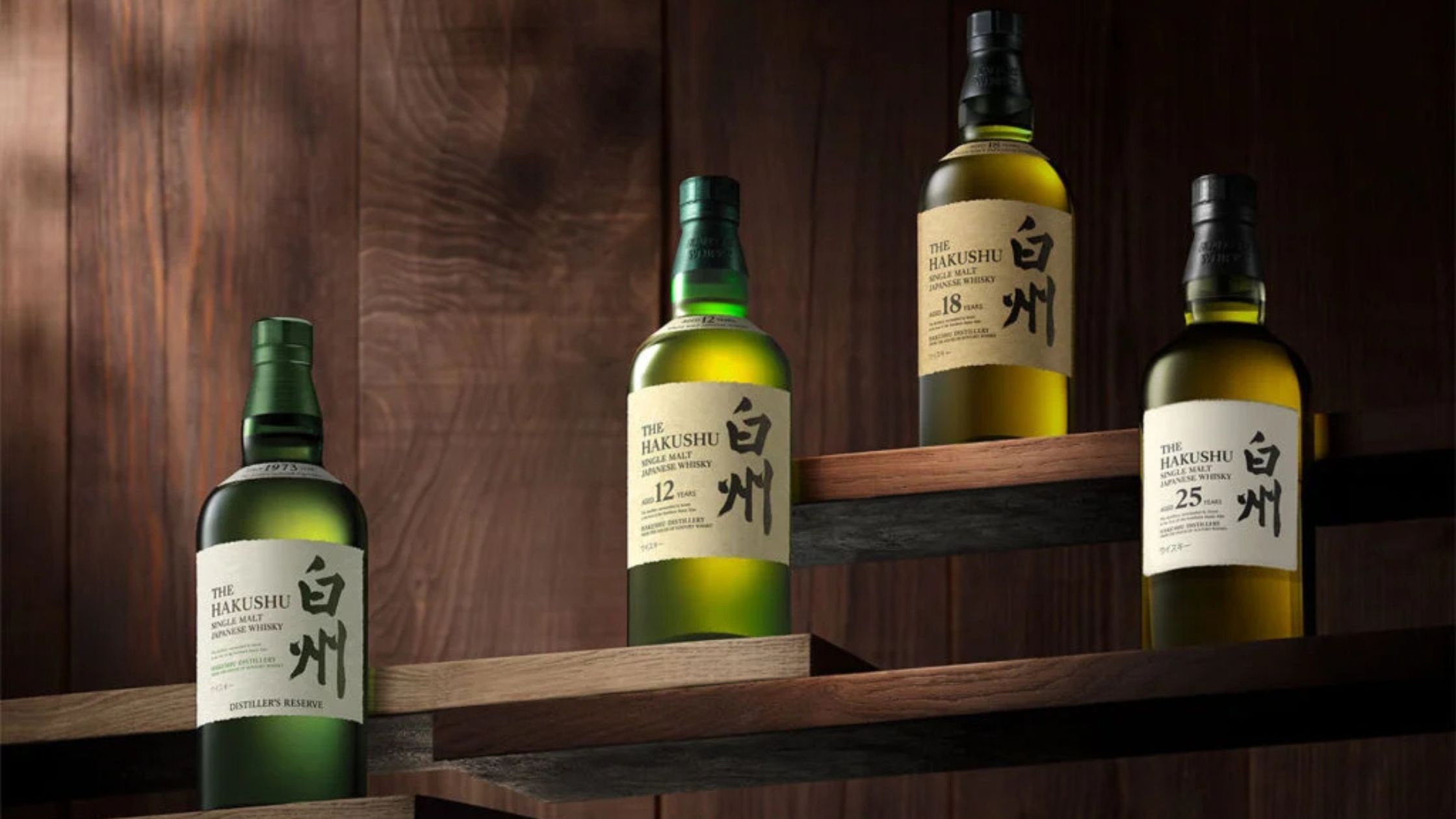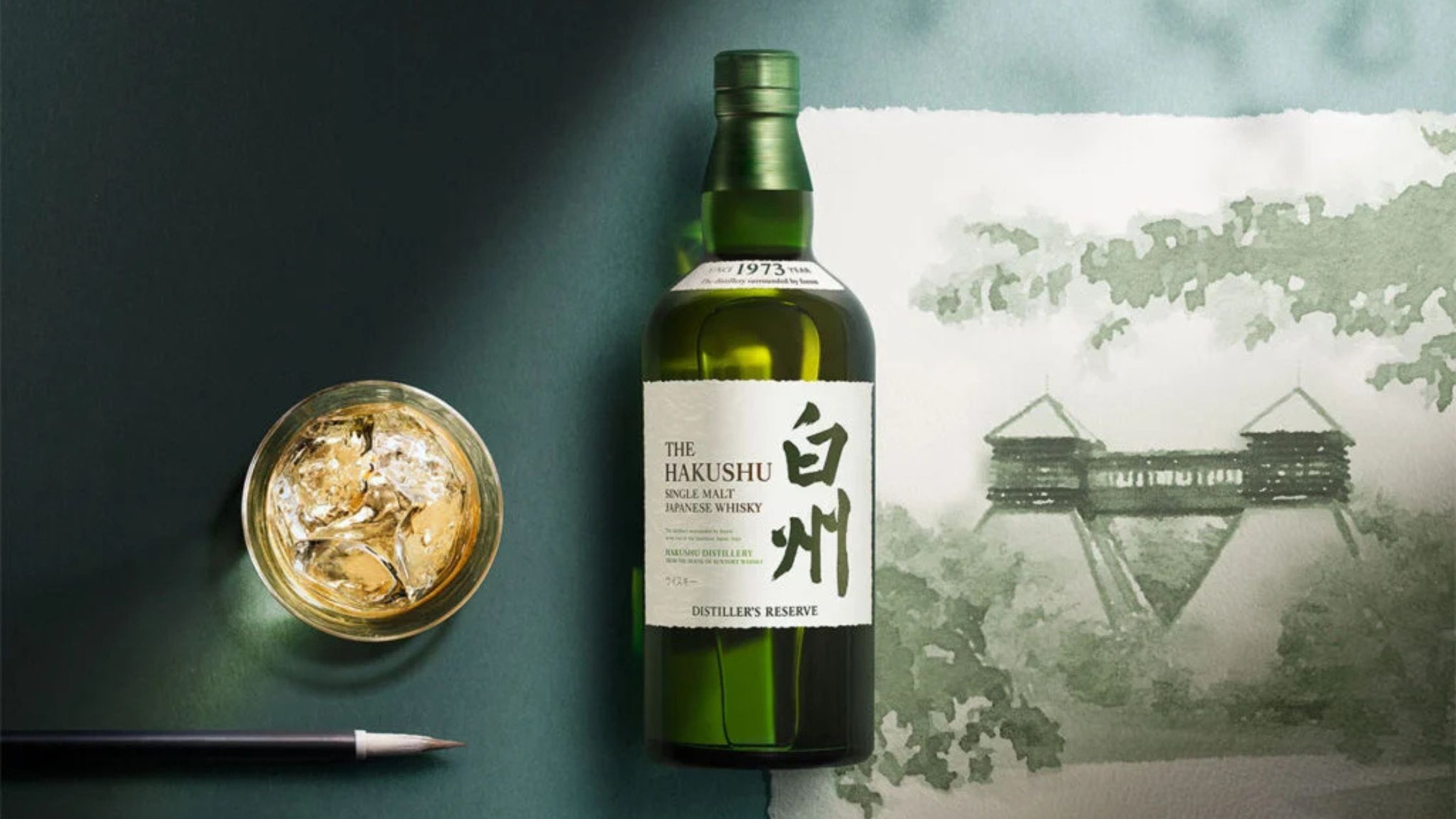Best Liquor Under ₹10,000 for a Perfect New Year 2026 Party
2025-12-05


Ever looked at a bottle of Japanese whisky and internally questioned... is this really made in Japan?
You're not alone. For years the term "Japanese whisky" was as clear as a foggy night in Kyoto, but that is changing fast. The industry has gotten a lot more serious with it, thanks to stricter industry standards, an official certifying body, and the lead of a number of innovative distilleries like Hakushu that are taking the high road.
On this post we are going to break down exactly what the JSLMA certification means, why Hakushu is a gold standard for true Japanese whisky, and what it all means for consumers, collectors, and whisky enthusiasts alike.
What Is Hakushu Whisky, and Why Do People Rave About It?
If you know whisky, you’ve heard of Yamazaki. But up high in Japan’s Southern Alps is Hakushu—Yamazaki’s younger sibling and the second single malt distillery from the House of Suntory.
Founded in 1973, exactly 50 years after Yamazaki, Hakushu brought a completely new style to Japanese whisky: crisp, fresh, and forested. Often called the "mountain forest distillery," it uses mineral-rich water, cooler fermentation, and lots of different still types to create a flavor profile that's as clean as a mountain breeze.
It's whisky for those who want complexity over power, and prefer to be elegant rather than punchy. And now, it is a whisky which is a textbook case of compliance with the strictest regulations surrounding whisky production in Japan.

Let's begin with a brief introduction. The Japan Spirits & Liqueurs Makers Association (JSLMA) has been in existence since 1953, but recently became a more recognized organization (at least, in the whisky world).
Why is this? In 2021 they enacted and introduced the first ever formal standards as to what defines Japanese whisky. Before, any brand could import whisky from Scotland, bottle it in Japan, slap a graphic of Mount Fuji on the label - and call it Japanese.
Yes, literally.
The new rules put an end to that hazy marketing, creating a definition that distilleries must adhere to in order to label it “Japanese whisky.”
| Criteria | Rule |
| Water Source | Must be extracted in Japan |
| Fermentation & Distillation | Must occur at a distillery located in Japan |
| Distillation ABV | Must be distilled to under 95% ABV |
| Maturation | Must be aged for at least 3 years in wooden casks (≤700L) |
| Bottling | Must be bottled in Japan |
| Final ABV | Must be bottled at or above 40% alcohol |
These guidelines aren’t legally binding for every producer—yet—but all JSLMA members are required to follow them. And major players like Suntory, Nikka, and Mars are fully on board.
Hakushu: Not Just Compliant—Proudly Authentic
The House of Suntory, which owns Hakushu, didn’t raise an eyebrow when JSLMA rules were announced. That’s because Hakushu already satisfied every one of those standards.
Everything from the source of water, to the stills, through fermentation and bottling, is done entirely on-site at Hakushu, nestled within the forests of Hokuto City in Yamanashi Prefecture.
Nothing there is sleight-of-hand (okay fine, maybe a tad bit of peat smoke). This is Japanese whisky, no questions asked.
“Hakushu doesn’t just taste different—it feels different.”
— House of Suntory
For Suntory, this isn’t just compliance. It’s cultural preservation. And in a world of mass-market blends and label trickery, that matters.
Let’s be honest—most casual drinkers assumed Japanese whisky was Japanese all along.
But behind the scenes, the market had started to fracture:
The JSLMA certification addresses all of that. It’s a stamp of integrity that tells you: “This bottle meets Japan’s standards.”
| Group | What It Means for Them |
| Drinkers | More trust, better label clarity |
| Importers | Easier regulation compliance in global markets |
| Retailers | Better justification for premium price tags |
| Collectors | Greater confidence in resale value and authenticity |
| Distilleries | Protection for genuinely Japanese brands like Hakushu |
Think of it like the “Champagne rule” in France. Not every sparkling wine is Champagne—and not every whisky with a Mount Fuji label is Japanese.
The New JSLMA Logo: A Label Worth Looking For
In March 2025, the JSLMA unveiled its logo: a minimalist round badge that emulates a whisky cask head with the letters "JW" in the centre and "Japanese Whisky" and "JSLMA" as the peripheral.
Expect to see it on certified brands like:
These are not just styled like Japanese whisky—they are Japanese whisky.
 Status for Japanese Whisky.jpg)
When step one was certification, step two is legal protection.
The JSLMA has recently announced their intention to register Japanese Whisky as a Geographic Indication (GI). Registration will legally protect the term in much the same way that Scotch, Bourbon, and Champagne are legally protected.
Upon registration, no one inside Japan or around the world will be allowed to label their bottle “Japanese whisky” unless they follow the prescribed rules.
It’s a legal framework that protects a region-specific product. Think Tequila, Parmigiano Reggiano, or Darjeeling Tea. The name isn’t just a marketing term—it’s a promise of origin.
And for distilleries like Hakushu that already tick all the boxes? GI status just reinforces the pride they’ve had all along.
So How Do You Know If a Whisky Is the Real Deal?
Good news: spotting authentic Japanese whisky is getting easier. Here’s what to look for:
If you still aren’t sure, check with retailers that specialise in Japanese imports or visit the official JSLMA website for a member list.

You don’t have to be a collector or a bartender to care about this stuff. Here’s why JSLMA certification is relevant for anyone buying a bottle:
And if you’re already a Hakushu fan? You’ve been sipping the real thing all along.
In an industry ruled by marketing, where buzzwords can sell a bottle, Hakushu is a rare exception: honest whisky in every drop.
Rather than scrambling to comply with new regulations, the distillery had a hand in establishing the new standards. Full JSLMA compliance and a fully transparent production process make it a gold standard in Japanese whisky today.
No matter if you are sipping on a dram of Hakushu 12, or if you are experimenting with the Distiller's Reserve, be assured of a few things:
You are not consuming Japanese whisky; you are consuming a piece of the essence of Japan and its distilled spirit made with intention, character, and no artificial shortcuts.
Read also: The English Distillery: Where England’s Whisky Renaissance Began